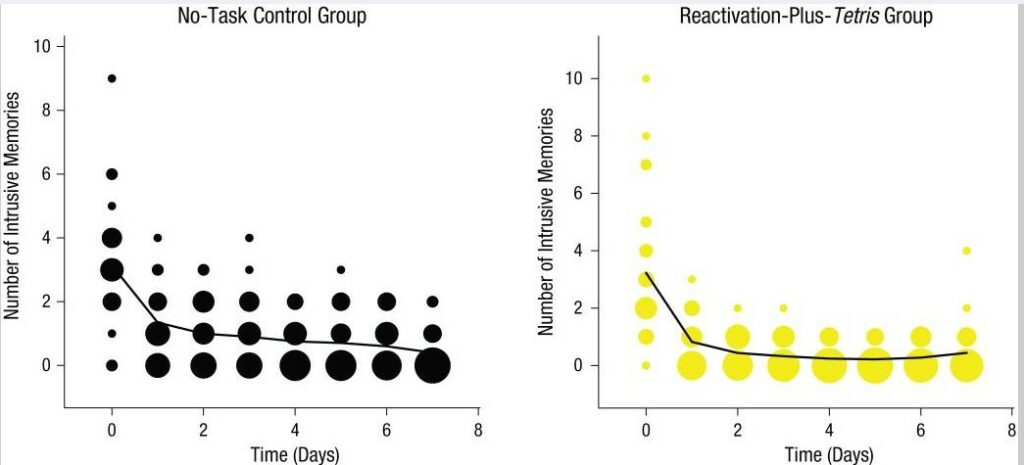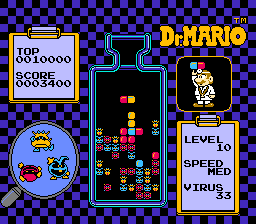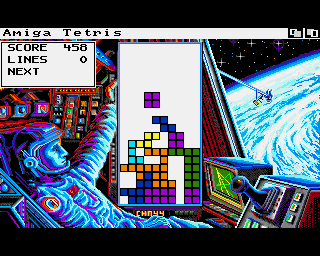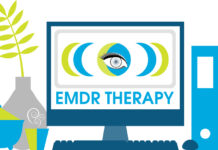Confession: I love video games. I think they’re great. After a stressful day, it’s a joy to sink into the couch with a controller in my hand and lose myself in a beautifully detailed role-playing game world, spend some social time in a co-op game, or test my skills in a competitive shooter.
But can gaming help with trauma?
I want to believe! And according to a new viral Twitter thread, studies ostensibly show that Tetris can reduce flashbacks after a traumatic event. Sounds good to me. I’m ready to jump on the bandwagon—and all I need to do now is see that the scientific research is sound.
I know, from personal experience, that video games can be relaxing and distracting, two powerful coping strategies. And playing games has helped me to reset after scary or emotional times in my life. Once, someone was actually shot and injured just outside my house and I played Assassin’s Creed for like two days straight after that. I would rate it as extremely helpful.
The Twitter thread, posted on October 7 by TV writer Jelena Woehr, presents a series of studies that appear to show that using Tetris for trauma is a powerful intervention. Woehr then theorizes about the neurobiology behind this effect. She concludes that using Tetris for trauma should be taught to all children in schools, and suggests that the only reason it is not is that “school funding is tied to standardized test scores, not to students’ mental health.”
The ultimate takeaway: “Put Tetris on your phone and the phone of somebody you love today. It’s literally a trauma first aid kit.”

By October 19, the thread had 18.7 thousand likes and 10.1 thousand retweets.
Should Tetris be taught to children in schools? Is it really just a crisis of funding that prevents kids from knowing that Tetris could heal their trauma? Is Tetris “literally a trauma first aid kit”? What does the evidence show?
The Evidence Presented by Woehr
Study 1
The first study Woehr links to is a 2015 study in Psychological Science called “Computer Game Play Reduces Intrusive Memories of Experimental Trauma via Reconsolidation-Update Mechanisms.” Based on the title, it sounds like people who played the game experienced fewer intrusive memories after a traumatic event, right?
Well—sort of.
The problem is that the study didn’t actually include people who experienced trauma. This was a study in 52 healthy college students.1 The students were shown a 12-minute film that supposedly mimics being a witness to a traumatic situation. The next day, the researchers reminded half the college students about the movie and had them play Tetris. The other half were not reminded of the movie and also did not play Tetris.
For the next seven days, the students then wrote down whenever they had “intrusive memories.” The results? The group that played Tetris had fewer “intrusive memories” of the scary movie over the following week.
However, what you can see if you look at the graph below is that a large proportion of people in both groups did not have “intrusive memories” at all. And in fact—although the difference was statistically significant over the course of the week—on day 7, the same number of people reported having intrusive memories in both groups.

But what does “intrusive memory” really mean, in this context? Did the students just occasionally remember a scene from the movie, with no distress, and write that in their diary? And is this an acceptable stand-in for actual traumatic flashbacks?
Ultimately, what we have here is a study in people who didn’t experience trauma with very little difference between those who played Tetris and those who didn’t.2
“Literally a trauma first aid kit” rating: 1/10
Study 2
Next, Woehr cites an NPR piece about a 2017 study, writing that playing Tetris reduced intrusive memories by 62% after a car crash.
On the surface, this study is far more convincing than the first one. To begin with, all 71 participants in this study had actually experienced trauma, since they were given this intervention after coming to the emergency department after a car crash.
The intervention was similar to the previous study; the participants were split into two groups, one of which was reminded of their trauma and then told to play Tetris; the other group was not. The participants then kept a diary of their intrusive memories for a week. As Woehr reports, the group that played Tetris experienced, on average, 62% fewer intrusive memories over the course of that week.
So far, so good! But that wasn’t the only outcome the researchers investigated:
At one month, there were no differences between the groups. The effect didn’t last; that’s still OK—maybe you have to play Tetris more often to have a longer effect. But it does deflate the hypothesis that playing Tetris soon after a traumatic event somehow stops the trauma from being passed on to becoming a long-term effect. Instead, from this we could conclude that perhaps playing a video game soon after a trauma might be helpful in the short term.
But although there was a significant effect for intrusive memories, other aspects of trauma were not affected by Tetris playing. The researchers tested avoidance, hyperarousal, post-traumatic distress, anxiety, and depression, at both one week and one month—and there was no difference between the groups. That is, playing Tetris didn’t help on any of the actual distress-related outcomes.
Moreover, a 2017 article in the same journal bluntly critiques this study, particularly taking issue with the use of hyperbolic language by the researchers, such as likening the Tetris intervention to a “cognitive therapeutic vaccine” and “a rabies vaccine after a dog bite.” The authors write that the week 1 effect could be considered “small and transient” and note that “the validity of both concepts [on which the study was based] has been strongly contested, both theoretically and empirically.”
“Literally a trauma first aid kit” rating: 3/10
Study 3
The next study cited by Woehr3 found that intrusive memories decreased by 64% on average, and 80% of the patients improved—again, a seemingly powerful effect.
One positive about this study: It included people who were actually hospitalized for complex PTSD. That’s one of the important populations we would want to know about when assessing whether this works.
But the rest of the study doesn’t quite live up to that promise. It included only 20 participants, and there was no control group (all of the participants were given the intervention). Everyone was already undergoing intensive inpatient treatment, including individual and group therapy, for PTSD, so the results could have been due to the fact that they were receiving 5 to 10 weeks of intensive therapy.4
“Literally a trauma first aid kit” rating: 2/10
The Evidence Not Presented by Woehr
There are plenty of other small studies on this subject, including some by the same researchers attempting to replicate their work (a hallmark of good science).
Study 4
A study from 2020 replicated Study 1. Eighty-six “healthy volunteers” watched a “trauma film” and then kept a diary of intrusive memories for about a week. The results were about the same as those described under Study 1, but they get a bonus for replicating the results, which makes their finding more reliable.
“Literally a trauma first aid kit” rating: 2/10
Study 5
A study from 2017 also replicated Study 1 by having 54 healthy participants watch a “trauma film” and then keep a diary of intrusive memories. However, in addition to the Tetris-playing group and the no-games group, this study had a group play word games. They found that playing word games was just as effective as Tetris at preventing intrusive memories of the movie.
That is, it doesn’t appear to be the visual effect of moving shapes that has a therapeutic effect, but something about just playing a game—any game.
But again, this was a study in a small group of healthy volunteers who watched a short film.
“Literally a trauma first aid kit” rating: 2/10
Study 6
In a study from 2016, researchers investigated whether playing Tetris before watching a scary short film would have a preventative effect. It did not.
“Literally a trauma first aid kit” rating: 0/10
Study 7
A study from 2020 included 10 participants who had experienced trauma. They listened to audio that instructed them to tap their fingers while remembering the traumatic incident. Three of the 10 participants no longer met criteria for PTSD after the intervention, but this was a tiny study with no control group and no way to account for the placebo effect.
However, if taken seriously, this study would broaden the intervention from “playing video games” to “doing just about any activity” after trauma.
“Literally a trauma first aid kit” rating: 1/10
Study 8
A study from 2021 failed to replicate even the limited findings of Study 1.
As usual, the researchers had 200 healthy college students watch the “trauma film” and then keep a diary of intrusive memories for about a week. There were four groups: three groups that played Tetris at a different point in the exercise, and one control group that did not play the game. The researchers found no effect in any of the groups.
The researchers write: “There were no significant differences in the number of intrusive memories between the four groups post intervention.”
“Literally a trauma first aid kit” rating: 0/10
Study 9
A study from 2020 used a slightly different task and failed to replicate the findings.
The participants were 77 people with actual traumatic experiences, who arrived in a trauma center just hours after the trauma. Half of them played a “semi-immersive Virtual Reality visuospatial task,” while the other half did not. The researchers found no effect on PTSD symptoms.
The researchers write: “No significant differences between the intervention and control groups were found regarding PTSD symptom levels two weeks and six months following the traumatic event.”
“Literally a trauma first aid kit” rating: 0/10
What’s the Takeaway?
In short, there is no convincing evidence that playing Tetris actually helps people. The studies have methodological problems, tiny sample sizes, and have failed to replicate. Some found a reduction in “intrusive memories,” but no improvement in outcomes of PTSD or distress.5
Dr. Michael Mullarkey provides an excellent overview of the implications on Twitter. The first tweet in his thread:
Sloppy data science from > 10 years ago and a viral thread filled with mental health treatment misinformation this week: A horror story
In fact, according to Mullarkey, the very theoretical basis for this effect is flawed—based on an analysis with statistical mistakes and poor methodological choices that, when reanalyzed, was no longer significant.
Why Did This Go Viral?
What made this particular post take off the way it has? After all, I write about scientific studies for a living, and none of my posts have garnered this type of attention.

I think the main thing here is that Woehr is an excellent storyteller. A good writer has to be able to cut right to the chase, get you interested, tell a story in few words, keep your attention, and make you feel like it all has deeper meaning—and this post does that so well. The use of all-caps on “SIGNIFICANTLY,” the overuse of “literally” for emphasis, the links to scientific studies that few will read or understand. All of this, plus the sense of “this is an amazing intervention, better than anything else, that you’ve never heard of!”
Then she provides a very scientific sounding explanation for why this would be true—something that sounds very plausible and smart:
(As far as how/why this works, that’s a matter for neuroscientists to continue to investigate, but the basic mechanism is: your eyes are the visible part of your brain so there are various ways to alter your neural circuitry through the eyes, and this one works especially well.)
If you’re familiar with EMDR, which also uses the eyes as essentially an access port for the brain in order to treat trauma, same basic principle applies here.
This is exactly the kind of vague pseudoscience that tends to proliferate virally. It sounds scientific enough, yet contains no actual scientific information. That means it’s easy for the layperson to parse (since it doesn’t contain any technical jargon or nuance), yet it also makes the layperson feel like it’s “real science” (since it uses science-related words like “neural circuitry”). Moreover, it includes trite metaphors (the eyes are “essentially an access port for the brain”) that are essentially meaningless but sound rather smart.
Nonetheless, she is correct about the theory behind eye movement desensitization and reprocessing (EMDR), which is an empirically supported therapy for trauma work. One key element of EMDR is bilateral stimulation, often by using light or sound on alternating sides of the head, which is theorized to aid in integrating traumatic memories. However, this theory is controversial—plenty of researchers believe it is not the bilateral stimulation that is important, but rather the psychotherapy—the “desensitization and reprocessing” aspect.
Moreover, the Tetris studies don’t fully support this as a mechanism: Some visuospatial interventions did not result in improvement, but playing a word game did.
Woehr concludes:
We should really all be taught about this in school but unfortunately school funding is tied to standardized test scores not to students’ mental health, so…
Put Tetris on your phone and the phone of somebody you love today. It’s literally a trauma first aid kit.
Nothing gets us riled up like the notion that some injustice, some systemic inequality, is preventing a perfect intervention from being taught that could save the children! But, as the actual evidence reviewed above demonstrates, it’s not because of funding that students aren’t being told to use Tetris after a traumatic event. It’s because there’s no convincing evidence that that would actually be very helpful.
What’s the Harm?
Ultimately, why make a big deal out of this? After all, video game playing may have some helpful effects and virtually no harmful effects. If people want to play Tetris after experiencing something scary, I wouldn’t stop them! It might help, and it likely won’t hurt.
The reason this is worth debunking, though, is that it is paradigmatic of the way a few contradictory small studies, in unrelated populations, with unclear effects, and which fail to be replicated can be misinterpreted by the layperson, and then shared on Twitter with a veneer of “science,” go viral, and soon become something that every layperson “knows” is true.
Take, for instance, the meme “If you can’t make your own serotonin/neurotransmitters, store-bought is fine.” This joke, which seems to have originated on Tumblr years ago, has now been popularized even further after being quoted on the popular podcast “My Favorite Murder.”
According to researchers, the notion of low serotonin in depression (often referred to as the “chemical imbalance” theory) originated in scientific research in the 1960s, then became ubiquitous with the TV ads for antidepressants in the ‘80s and ‘90s. But the problem is that the so-called “chemical imbalance” theory has been long-debunked:
- “There is not a single peer-reviewed article that can accurately be cited to directly support claims of serotonin deficiency in any mental disorder.” (Society, 2008)
- “Contemporary neuroscience research has failed to confirm any serotonergic lesion in any mental disorder, and has in fact provided significant counterevidence to the explanation of a simple neurotransmitter deficiency. Modern neuroscience has instead shown that the brain is vastly complex and poorly understood. While neuroscience is a rapidly advancing field, to propose that researchers can objectively identify a “chemical imbalance” at the molecular level is not compatible with the extant science. In fact, there is no scientifically established ideal ‘chemical balance’ of serotonin, let alone an identifiable pathological imbalance.” (PLOS Medicine, 2005)
- “Most experts in the field of psychiatry recognize that neuroscience advances have yet to be translated into clinical practice. The main message delivered to laypeople, however, is that mental disorders are brain diseases cured by scientifically designed medications. Here we describe how this misleading message is generated.” (Harvard Review of Psychiatry, 2020)
- “Psychiatric diagnoses and medications proliferate under the banner of scientific medicine, though there is no comprehensive biologic understanding of either the causes or the treatments of psychiatric disorders.” (New England Journal of Medicine, 2019)
In fact, well-known mainstream psychiatrists have claimed that the chemical imbalance myth has actually been promoted by anti-psychiatrists in order to make psychiatry look stupid.
Yet it sounds so “scientific,” and I can’t open Twitter or Facebook without seeing someone sharing this myth as an explanation for their experiences. It’s become an integral part of popular culture: take, for example, the song “Serotonin” by Girl in Red, which has almost 3.5 million views on YouTube:
I’m running low on serotonin
Chemical imbalance got me twisting things
Stabilize with medicine
But, again, what’s the problem? If this belief helps people get the help they need, who cares if it is scientifically sound or not?
Well, according to the Harvard Review of Psychiatry (2020): “These misrepresentations affect the care of patients. Indeed, studies show that a neuro-essentialist conceptualization of mental disorders negatively affects several aspects of stigmatization, reduces the chances of patients’ healing, and overshadows psychotherapeutic and social approaches that have been found effective in alleviating mental suffering.”
That is, these myths become internalized, forestalling the ability to focus on social, environmental, or psychological aspects of problems in favor of the “easy fix” of drugs.
Moreover, studies have found that explaining mental health through a predominantly biological understanding leads to more stigmatizing behavior, not less: it increases desire for social distance from people diagnosed with mental illness, increases perceived dangerousness, and makes people pessimistic about their ability to recover and live normal lives. Even for mental health clinicians, those who focus more on biological explanations appear to have less empathy for people with mental health problems.
In short, propagating misleading science, even as a layperson, even in the service of “raising awareness” or “trying to help,” can actually harm people at their most vulnerable moments. Unfortunately, once these pseudoscientific explanations take root for the layperson, it’s very hard to explain that what you think you know isn’t so.
There’s a parallel here to the current controversy around the coronavirus vaccines. The antivaccination movement is full of laypeople who have “done their own research” and concluded, based on flawed (and even falsified) studies (many of which have been retracted), that vaccines are an enormous danger.
But the biggest problem is that laypeople can’t be expected to parse the nuance of scientific research, analyze methodology for poor trial design, or even interpret complex and contradictory findings. The research community and the journalists who report on science news need to do a better job.
Dr. Mario
One of the best-selling Tetris clones was Nintendo’s Dr. Mario, in which the player must rotate and drop pills of varying colors to eliminate “viruses.” Could Tetris be a “Dr. Mario” for trauma?

We all want to believe that there’s a magic bullet out there, that a quick game of Tetris will stop us from being traumatized after we experience something horrible. But recovering from trauma, especially repeated or childhood trauma, is not something that happens overnight. Developing a sense of safety, of connection with others, a sense of hope, and beginning to perceive the world as a nice place, not a scary place—10 minutes of Tetris can’t do that. It takes finding physical safety (like safe housing, away from abusers). It takes the empathy of others, friends and loved ones who treat you with the respect a human being deserves. Maybe it takes psychotherapy, meditation, or something else to process what you’ve been through and figure out how to make meaning of it.
And hey—maybe playing a videogame can help you feel safe, relaxed, even happy. And if that’s the case, then do it! I know I will. Just don’t expect the moon.






For the past several DECADES, people have sensationalized, misrepresented, extrapolated, exaggerated, or just straight up LIED about scientific evidence- from government offices and TV broadcasts and in newsprint. Their motives differ but the result is the same- the gradual erosion of public faith in science and science communicators.
The consequences have been fatal on a catastrophic scale over the past two years as the COVID-19 pandemic killed millions of people who might have been spared if science leaders like the WHO hadn’t dragged their feet to save China’s face. Hundreds of thousands who might have worn masks or stayed home if that trust hadn’t been squandered. Countless people who would have gotten vaccinated in time to save their lives. That death toll is on the hands of “pro-science” liars like Ms. Woehr even more than it is on the hands of “anti-science” disinformationists and antivaxxers.
Report comment
I thought COVID discussions were off-limits here so maybe I’m unclear. Regarding the above comment, I will unemotionally state what to me is obvious and leave the discussion for others to pursue for now.
Here are some assumptions which should be subject to challenge:
a) That masks prevent or reduce the spread of COVID. (The only truly scientific study I’m aware of concluded otherwise.)
b) That lockdowns reduce the spread of COVID. (They actually force more people to share and recycle air in close quarters.)
c) That mnra “vaccines” are actual vaccines, and that they are essential to humanity surviving COVID. (“Fully vaccinated” people can both be infected and spread COVID to others without knowing it, and in Britain constitute 70% of recent deaths.)
So before insulting characterizations such as “anti-vaxxer” are thrown around it would behoove those making such statements to document them.
Report comment
This is not a Covid opinion comments section.
Stay on topic, instead of continuing your personal debate.
Report comment
First, it is obvious that most journalists/reporters do not understand how to read and comprehend scientific research studies. Second, they report what they don’t actually read and understand to the public as “gospel truth.” Many times, an alleged study is just scrolled across the screen without exclamation or real sources or the reporter/anchor will say “xyz organization” says “50% of people have this disease or whatever because they do or don’t do whatever.” Reports like this are really anounced as a form of fear-mongering—trying to scare us to do or not do one thing or another; without any regard to the individual person who may hear this report. This was common before the “pandemic.” It seems to have really taken off since the onset of the “pandemic.”
Second, I have only tried “Tetris” a few times. And every time, it stressed me out to an unbelievable degree. But, so has “PacMan” and almost all video games. Many do report relaxation and other positive feeling from “video games” but I am the exact opposite. I don’t know if this is generational as I was born at the tail end of the baby boomer generation or if it is just me. But, then like all things if there were those of younger generation who were stressed bu video games or computer work, they would not be reported. Why? They do not fit the “narrative” the “bias” that certain generations have taken to computers like a baby does to his or her mother’s milk.
A narrative like this also causes undue bias and misrepresentation of the truth. In the end, this type of thinking and reporting not only erodes trust, but freedom, Thank you.
Report comment
does this study have any merit? https://www.ncbi.nlm.nih.gov/pmc/articles/PMC7828932/
Report comment
Sounds safer and more reliable than any of the drugs on offer!
Report comment
Three other studies found that playing Super Mario improved the hippocampus similarly to Tetris in the study you referenced:
https://pubmed.ncbi.nlm.nih.gov/24166407/
https://www.jneurosci.org/content/35/49/16116
https://journals.plos.org/plosone/article?id=10.1371/journal.pone.0187779
Tetris, therefore, isn’t unique.
Report comment
I must have a well-developed hippocampus, then! Spent a lot of hours with Mario when I was younger! I still play Tetris to this day!
Report comment
Thank you. A medical colleague told me Tetris prevents PTSD and I was astonished that this was being recommended to patients. I think I’ve also heard there is some sort of study that Tetris treats amblyopia? I would love your take on that.
Report comment
I’m glad to have enough science literacy to be able to scan a paper and either understand it, or know I don’t understand it, and also, either I have a pretty good idea of how much weight the work deserves, or I know I have no idea how much it deserves.
This seems to be unfortunately rare.
Oh- and to know how to find the paper somebody is talking about! Step 1! Most people don’t even get to step 1!
Report comment
I am a CBT therapist from the UK. Some of my supervisee tried a variation on the Tetris method with Trauma clients after reading the articles online. We had great success at reducing the distress caused by intrusive images in these clients.The success was even more unusual as the technique worked even with long standing trauma images.We used a couple of minutes holding image then 2 mins ish of tetris.Its a bit like image exposure meets emdr. The left right action on the tetris game is a bit like bi lateral stimulation in emdr. Seems to work here. It’s not an RCT but it is a start.
Report comment
Fascinating article. I was skeptical at first, but the breakdown of the ‘Tetris for trauma’ study’s flaws was impeccable. It’s alarming how easily misleading research can gain traction, and your thread lays bare the importance of rigorous methodology in behavioral science. Thank you for holding the academy accountable!
Report comment
This post brilliantly highlights the dangers of misrepresenting psychological research. It’s crucial for both researchers and the public to critically evaluate claims about mental health interventions, especially those that gain traction on social media. Thanks for shedding light on this complex issue!
Report comment
This was a fascinating read! The exploration of how Tetris has been misrepresented in the context of trauma recovery highlights the dangers of oversimplifying complex psychological phenomena. I appreciate the depth of analysis and the emphasis on being critical of research claims, especially when they gain viral attention. It’s crucial to maintain a nuanced perspective on mental health treatments. Thank you for shedding light on this issue!
Report comment
This post brilliantly highlights the pitfalls of misinterpreting psychological research in popular media. It’s scary how easily misinformation can spread and influence public perception, especially regarding something as serious as trauma treatment. Thank you for shedding light on the nuances that often get lost in viral trends!
Report comment
This blog post does a fantastic job dissecting the Twitter thread and its implications on mental health research. It’s alarming to see how easily misinformation can spread, especially when it involves something as sensitive as trauma. The critical analysis provided is a much-needed reminder to approach psychological claims with skepticism. Thanks for shedding light on this important issue!
Report comment